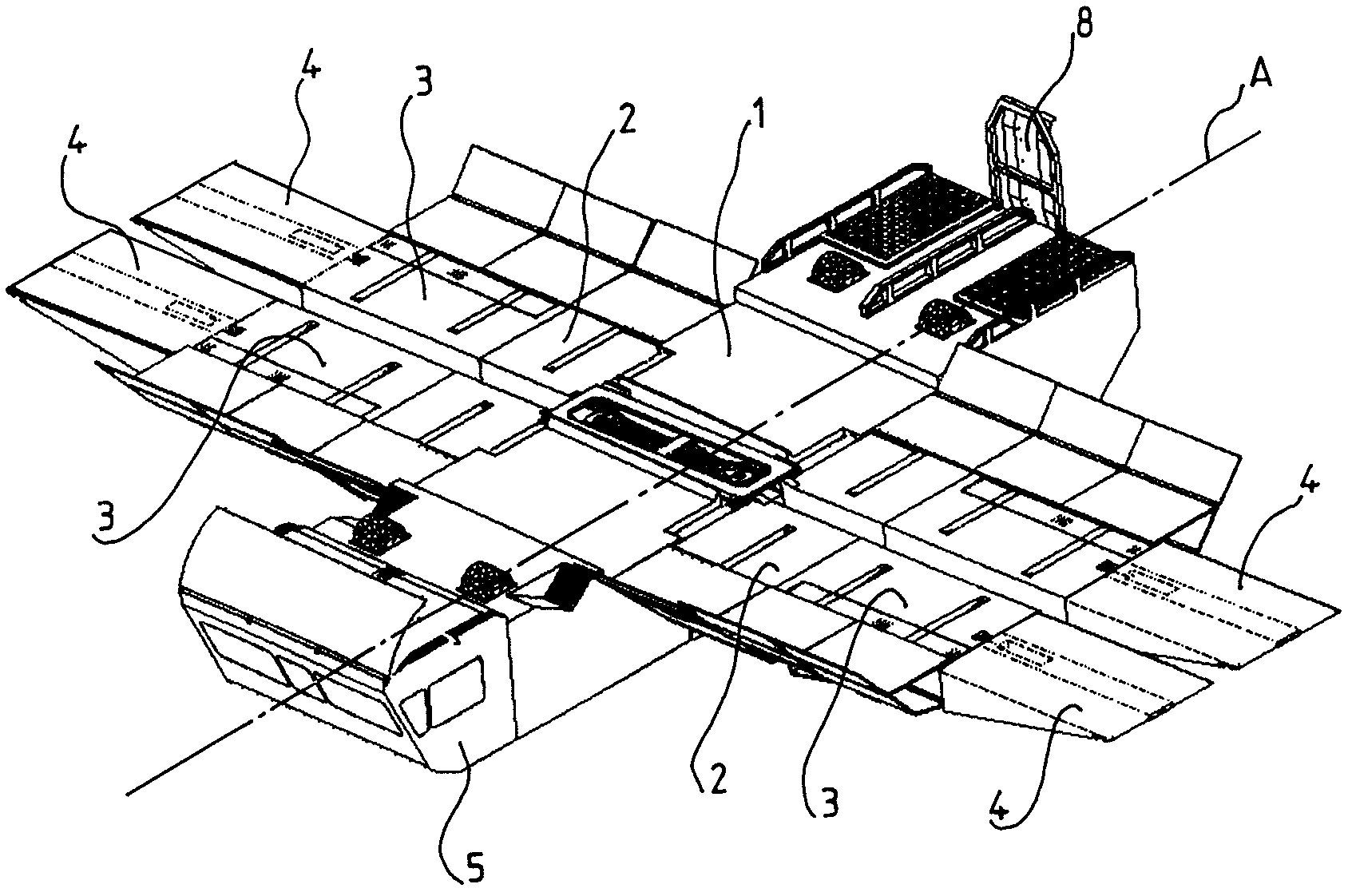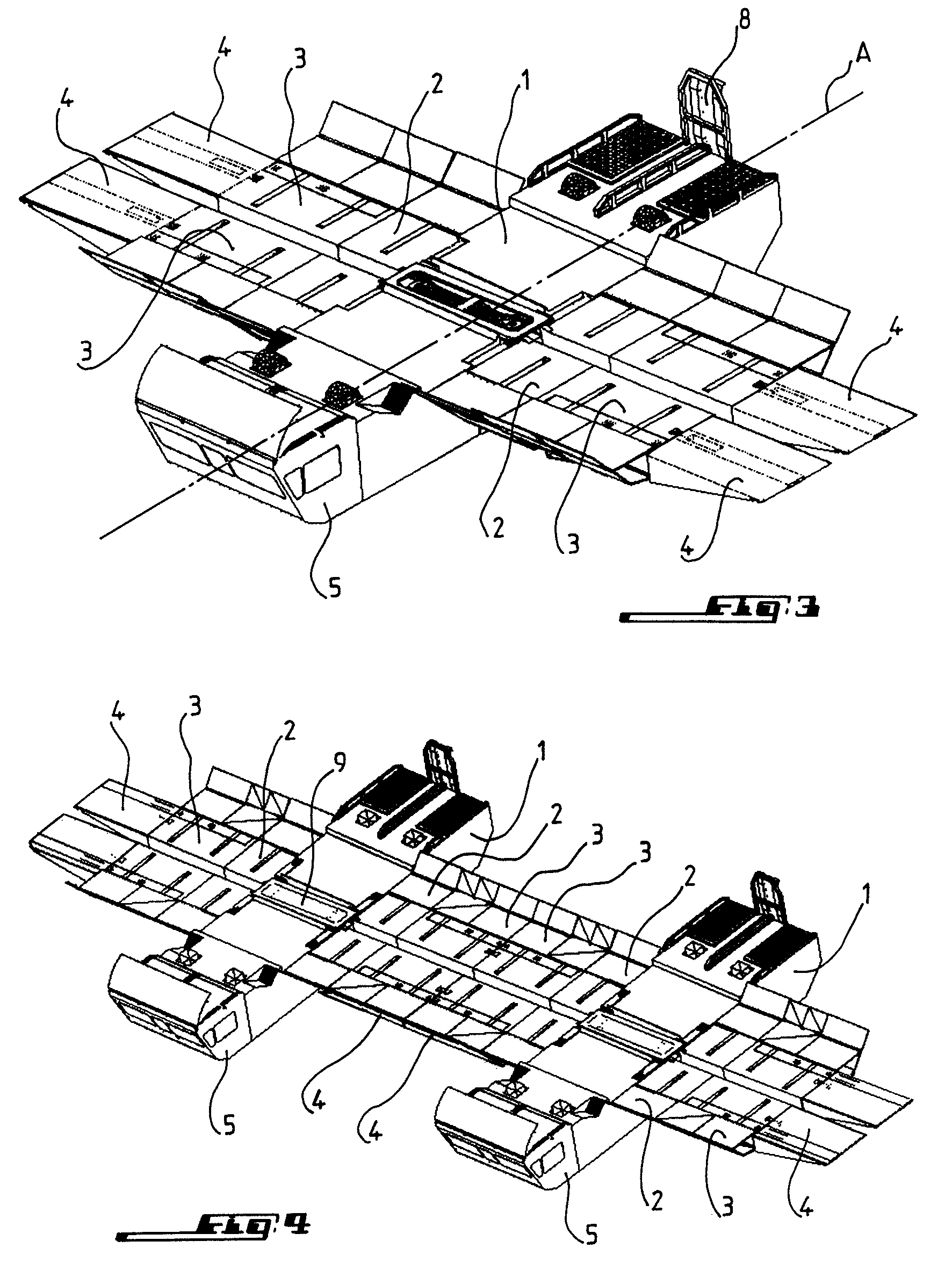Amphibious vehicle which has elements for forming a floating bridge
a technology of floating bridges and amphibious vehicles, which is applied in the direction of bridges, propulsive elements, vessel construction, etc., can solve the disadvantage of having to turn the group of elements into a single unit, and achieve the effect of increasing the stepping down effect of the load of deploymen
- Summary
- Abstract
- Description
- Claims
- Application Information
AI Technical Summary
Benefits of technology
Problems solved by technology
Method used
Image
Examples
Embodiment Construction
[0093]As shown by FIGS. 1 and 2 respectively in the form of a perspective view from above and in the form of a perspective view from below, an amphibious vehicle according to the invention has, arranged on self-propelled rolling base 1, elements such as caissons 2, floats 3 and ramps 4, these elements being arranged some at least partially over the others and according to an orientation essentially parallel to longitudinal axis A of rolling base 1, when the vehicle is in a folded up configuration for movement on land. The elements are configured so that they can be deployed in such a way as to form a track or bridge portion oriented transversely with respect to longitudinal axis A of rolling base 1, when the vehicle, alone or with another vehicle of the same design, is supposed to form a floating bridge or a ferry.
[0094]The main structure of rolling base 1 of the vehicle of the invention consists of a sealed self-supporting body preferably made of aluminum and a cabin connected with...
PUM
 Login to View More
Login to View More Abstract
Description
Claims
Application Information
 Login to View More
Login to View More - R&D
- Intellectual Property
- Life Sciences
- Materials
- Tech Scout
- Unparalleled Data Quality
- Higher Quality Content
- 60% Fewer Hallucinations
Browse by: Latest US Patents, China's latest patents, Technical Efficacy Thesaurus, Application Domain, Technology Topic, Popular Technical Reports.
© 2025 PatSnap. All rights reserved.Legal|Privacy policy|Modern Slavery Act Transparency Statement|Sitemap|About US| Contact US: help@patsnap.com



